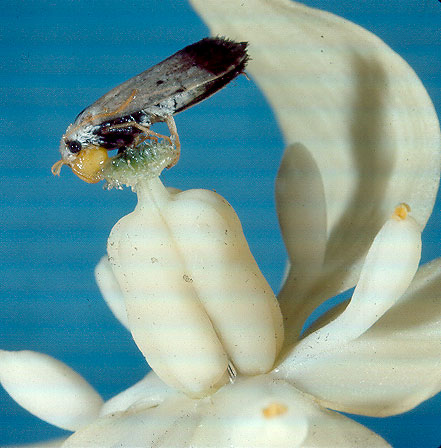65. Give an examples of co-evolution.
Yucca flowers and the yucca moths.
 |
The flower cannot be pollinated by natural means. The Stigma is not sticky so the pollen just blows off. Instead the moth lands on the pollen heads, pollen sticks to its body and next the moth burrows into the base of the ovary laying her eggs. In the process of laying her eggs, pollen from her body is transferred to the ovary and the ovules are fertilized. These ovules soon become viable seeds and when the fruits are dropped, germinate into new plants. The caterpillars emerge from the eggs, eat part of the ovary and later pupate into adult moths. The relationship continues. |
Pronuba moth and Yucca
 |
 |
Termites |
Intestinal Protozoa |
Termites and their intestinal protozoa.
Termites required the small protozoa in their gut to digest cellulose. Very few organisms can brake down this carbohydrate, only these protozoa. The protozoa manufacture an enzyme called cellulase, which you might have guessed, breaks down cellulose. The termites need these single celled organisms to make their food available.